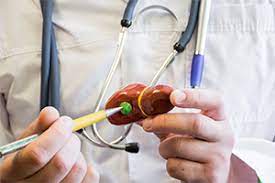Gallbladder Infections: Signs You Shouldn’t Ignore

The gallbladder, a small organ located beneath the liver, plays an essential role in digestion by storing and releasing bile, which helps break down fats. While it’s not an organ we often think about, problems with the gallbladder can lead to serious health concerns. One such issue is a gallbladder infection, also known as cholecystitis. This condition can escalate quickly, making early recognition of its signs and symptoms critical to preventing complications.
What is a Gallbladder Infection?
A gallbladder infection occurs when bile becomes trapped in the gallbladder, leading to inflammation. This is most often caused by gallstones blocking the bile ducts, but infections, tumors, or trauma can also contribute. Cholecystitis can be classified into two types:
- Acute cholecystitis: A sudden and severe inflammation of the gallbladder.
- Chronic cholecystitis: A long-term condition characterized by recurring inflammation and gallbladder damage.
Left untreated, this condition can cause severe complications, so understanding its symptoms is vital.
Key Signs and Symptoms
Gallbladder infections can present with a variety of symptoms, which may initially seem mild but can worsen over time. If you’re experiencing any of these symptoms, consulting a top gastroenterologist is crucial. The most common signs include:
- Persistent upper right abdominal pain: This pain often worsens after eating, particularly fatty meals, and may last for several hours.
- Pain radiating to the back or right shoulder: Discomfort is not always localized and can spread to nearby areas.
- Nausea and vomiting: Digestive distress is a frequent symptom accompanying the pain.
- Fever or chills: These may indicate that the infection has escalated.
- Jaundice: Yellowing of the skin and eyes suggests a bile duct obstruction or more severe complications.
- Bloating and indigestion: People with gallbladder infections often report difficulty tolerating fatty or heavy foods.
If you notice any of these symptoms, it is crucial to consult a healthcare provider promptly.
Risk Factors for Gallbladder Infections
Certain factors increase the likelihood of developing a gallbladder infection. These include:
- Gallstones: These are the primary cause of cholecystitis. When stones block the bile ducts, bile builds up, leading to inflammation.
- Age and gender: Women, especially those over 40, are at higher risk due to hormonal factors.
- Obesity and poor diet: Diets high in fat and cholesterol can lead to gallstone formation.
- Medical conditions: Diabetes, high cholesterol, and certain infections can predispose individuals to gallbladder problems.
- Family history: A genetic predisposition to gallstones or gallbladder issues increases risk.
Complications of Left Untreated
Without treatment, gallbladder infections can lead to severe complications, including:
- Sepsis: The infection can spread to the bloodstream, posing a life-threatening risk.
- Gangrene: A lack of blood flow to the gallbladder can cause tissue death, requiring emergency surgery.
- Ruptured gallbladder: A severe infection can cause the gallbladder to burst, leading to widespread abdominal infection.
- Chronic digestive problems: Persistent issues can disrupt overall digestion and nutrient absorption.
When to Seek Medical Attention
Some symptoms require immediate medical care. These include:
- Severe abdominal pain lasting longer than a few hours.
- High fever with chills.
- Jaundice or dark-colored urine.
- Rapid heartbeat or difficulty breathing.
Ignoring these signs can result in life-threatening complications, so timely intervention is key.
Diagnosis and Medical Evaluation
When you visit a healthcare provider, they will perform a series of tests to diagnose gallbladder infection:
- Physical examination: Doctors will check for tenderness in the upper right abdomen.
- Imaging tests: Ultrasound and CT scans help detect inflammation, gallstones, or bile duct blockages.
- Blood tests: These identify signs of infection or inflammation in the body.
Early diagnosis makes treatment more effective and reduces the risk of complications.
Treatment Options
The treatment for gallbladder infections depends on the severity of the condition. If you’re seeking expert care, consulting the stomach specialist in Islamabad can ensure a precise diagnosis and tailored treatment. Common approaches include:
- Conservative management: Mild cases may be treated with fasting to rest the gallbladder, intravenous fluids, pain relief, and antibiotics to control infection.
- Surgical options: Severe cases often require gallbladder removal (cholecystectomy). This is typically done laparoscopically and has a quick recovery period.
Preventive Measures
To reduce the risk of gallbladder infections, consider these lifestyle changes:
- Maintain a healthy diet: Eat a balanced diet rich in fruits, vegetables, whole grains, and lean proteins while minimizing fatty and processed foods.
- Exercise regularly: Physical activity helps maintain a healthy weight and prevents gallstone formation.
- Stay hydrated: Drinking plenty of water supports overall digestive health.
- Avoid rapid weight loss: Losing weight too quickly can increase the risk of gallstones.
Conclusion
Gallbladder infections can range from uncomfortable to life-threatening, but recognizing the signs early can make a significant difference. If you experience persistent abdominal pain or other symptoms, seek medical attention promptly. With timely diagnosis and appropriate treatment, most people recover fully and can prevent serious complications. Taking steps to maintain gallbladder health through diet and lifestyle changes can also reduce your risk of future issues


